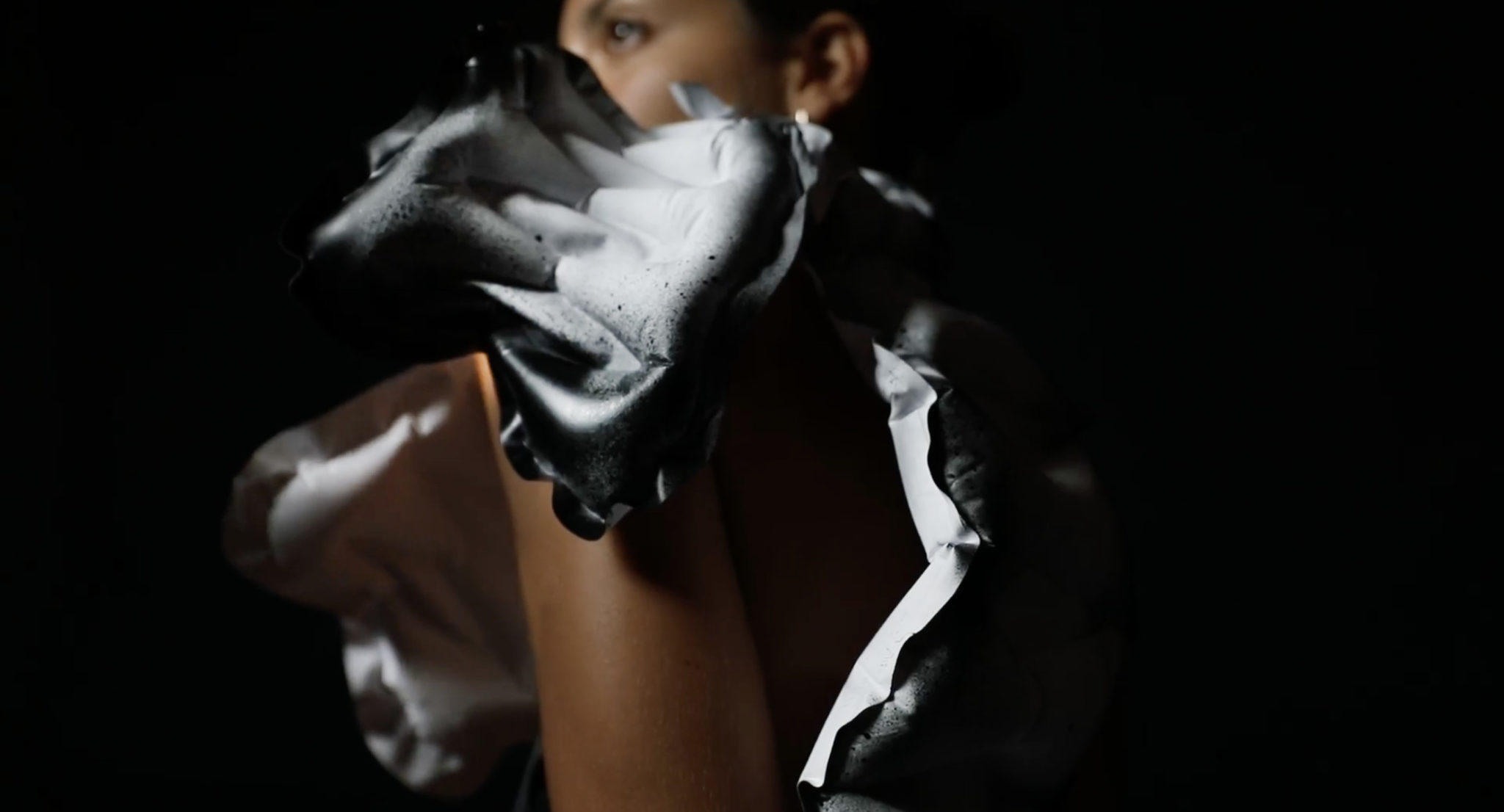
Creative Projects exploring Fashion Technology
Take a glimpse into the projects developed during the past editions of the educational program Future Technologies for Sustainable Fashion
The Future Technologies for Sustainable Fashion educational program spans a duration of two months, fostering collaborations in the emerging field of Fashion Technology. During its course, students will work intensively to develop emerging technologies that respond to societal needs through a hands-on approach, using digital manufacturing, first-person perspective methodology, multiverse thinking, and embodied design ideation methods. The resulting projects will be led by mixed student teams from the two participating institutions, Fab Lab Barcelona and IED, working under the guidance of a broader and multidisciplinary pool of experts in order to ideate and prototype solutions through a hands-on approach. of a comprehensive and multidisciplinary panel of experts, fostering the creation and prototyping of solutions through a practical, hands-on methodology.
In the following blog post we invite you to discover what projects were developed during the previous 2 editions of the educational program.
2022 Edition
AEMULA
Wet-bulb temperature is the temperature when the humidity level is 100%. Wet bulb temperatures exceeding 35°C induce overheating in humans, marking our survivability limit to climate change, and these events are predicted to be common by 2180. Aemula is a protective layer to be worn as temporary “shelter” in the event of a wet bulb level spike. Inspired by wind towers cooling systems, this shelter features pipes filled with PEG-1000, a phase change material that activates at 35°C and “pumps” the heat, allowing the wind blowing through those pipes to cool the user down until they find their nearest shelter.
By: Annah Ololade, Maria Clara Golfo
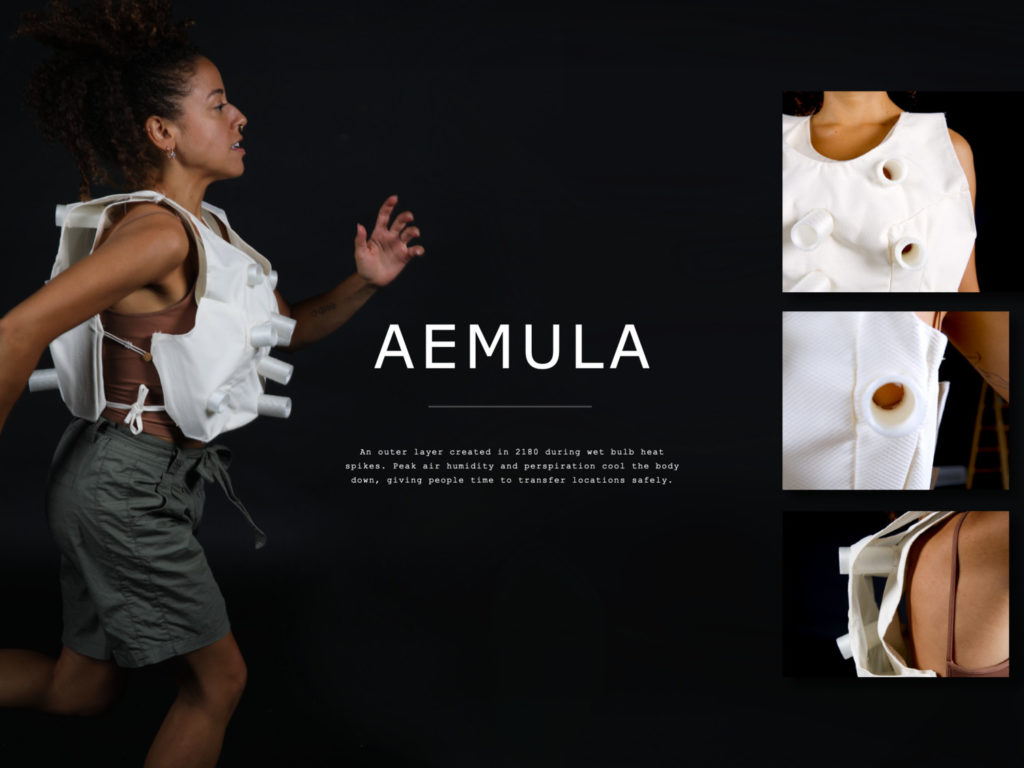
CRESCENDO
In the year 2122, pandemics and global catastrophes have transformed the earth completely, resources have been limited and the access to nature is severely restricted. The few natural resources left are now enclosed natural reserves. The world is a concrete jungle filled with depressed, stressed and anxious humans. The earth has lost its color.
In Crescendo we want to bring color back. We are a group of fashion scientists that are working on revolutionizing the way garments are produced. We use lab-controlled genetic modification and guided growth performance technologies to grow colored clothes directly from the cotton plant skipping significant steps of the production process while making a sustainable impact on our environment. Our vision is to make our technology available for everyone in the near future, gradually increasing the excitement of living in a colorful world.
By: Paola Chavero, Janvi Gohel, Elena Valdés
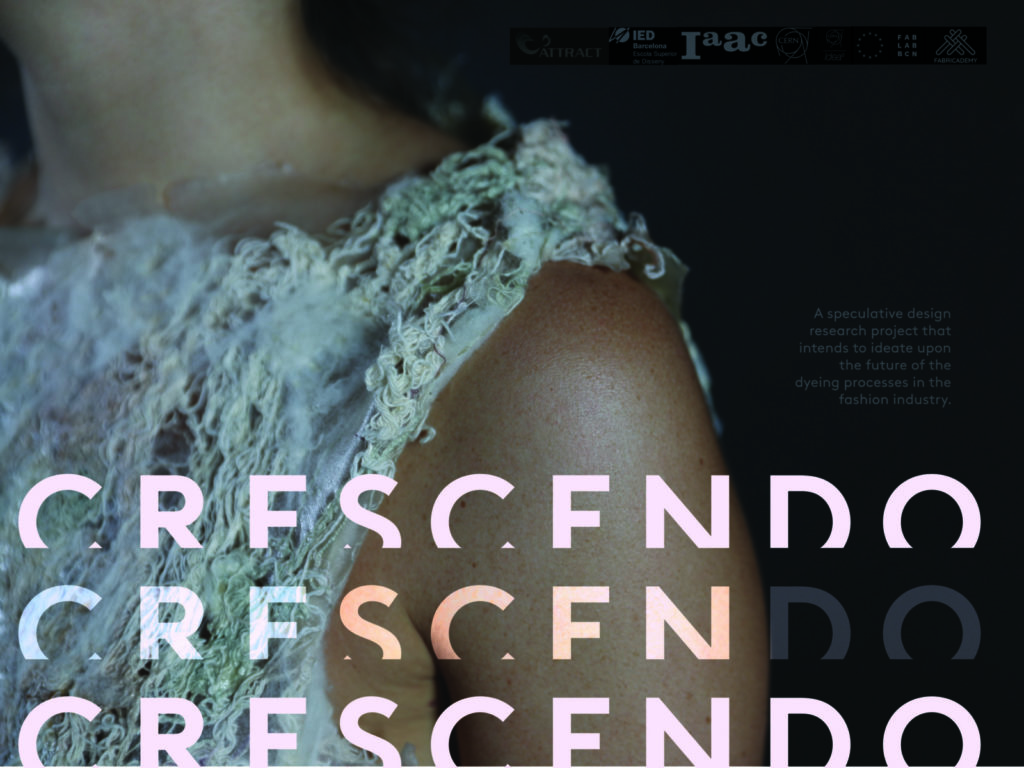
CRYSTALGENESIS
In 2150, Atopic Dermatitis (Eczema) affects more than 50% of the world population. Now, amidst a record-breaking heat wave, the world tries to provide humanitarian relief as symptoms of eczema and other skin diseases are greatly exacerbated in scorching temperatures.
Eczema affects the human skin, making it drier, more prone to irritations, infections, and allergies. Those who suffer from eczema can experience excruciating symptoms, such as severe itching, hay fever, and even asthma.
To us, the year 2150 does not only signify a life-changing pandemic, but also the year in which fashion, which is adjusting to new realities and exploring new technologies, provides humanitarian relief.
After all, Nature is wise. It provides an inexhaustible source of salt, the ore that has the power to heal skin that suffers from Eczema. Through the fusion of fabric and salt crystals, antibacterial fashion provides the world great skin relief and new hope.
We are Crystal Genesis, the brand that is adapting to new world conditions. We have the solution to ease your pain.
By: Thomas Valenti, Eduarda Grossi, Petra Garajová
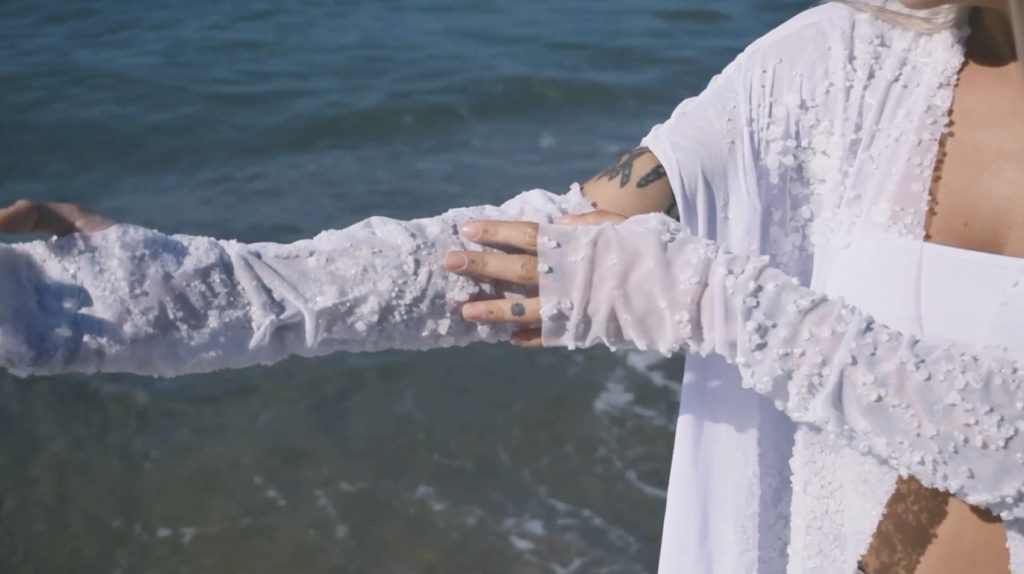
KAMBIO
In the year 3000, the severity of climate change and the damage it inflicts upon the world is immense, causing untold destruction of nature and environment. The fashion industry is one of the primary causes of this catastrophe and Kambio is striving to change it. Now we only have one garment per person and there is an interaction between the environment and clothing. In doing so, we approach the fashion industry from a futuristic and sustainable point of view, as the reshaped garments are programmed with AI to transform themselves without generating waste. We believe we are rebuilding a more balanced world in which we can live with a single garment which has the ability to protect the wearer from the outside and also maintain them in good health. The garment predicts the weather and thermoregulates the body at the same time.
This textile and technological project is born from a speculative methodology, drawn from the disastrous effects of today’s world.
By: Vidisha Goel, Micaela Clubourg, Saskia Helinska
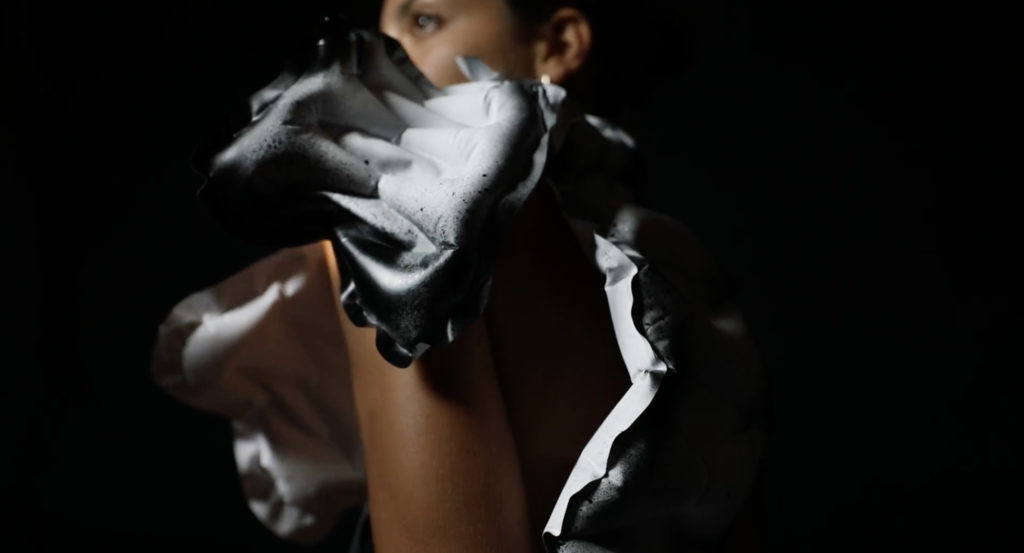
2023 Edition
ATARAXIS
We asked ourselves how could a creative application of Megamorph help protect a wearer in the future from noise induced anxiety? We developed our garment, Ataraxis, (meaning without stress or anxiety) to serve as a way of dampening noise, communicating emotions, and soothing of anxiety. Ataraxis covers the head and arms (much like a hug), has lights (fiber optics) and the heart rate monitor in the earpiece – Ataraxis first alerts the wearer with a short vibration (on their shoulder) if their heart rate is elevated. If their heart rate continues to be elevated, it then switches to four second aimed breathing patterns to help calm the wearer. Ataraxis also has the option of selecting colors/patterns of feelings (happiness (white), anger (reds), sadness (blues), fear (greens) to communicate feelings to others.
In the future we imagine these personalized symbolisms can visualized through AI (as shown in our video) and shared with other users. Ataraxis allows the wearer to express the inexpressible – engaging with the people around them without verbal communication. The visuals are also meant to transform the emotional experience calming the wearer. The wool material selected for this the project would be made from is both sustainable and noise dampening. Our idea is that in the future the biofeedback could be measured in an app that allows user to be aware of their emotions and share with others (i.e. social connections and/or health professionals) – so the sound becomes less overwhelming.
By: Luis Alvarado, Paula Sanchez, and Autumn Lin Kietponglert
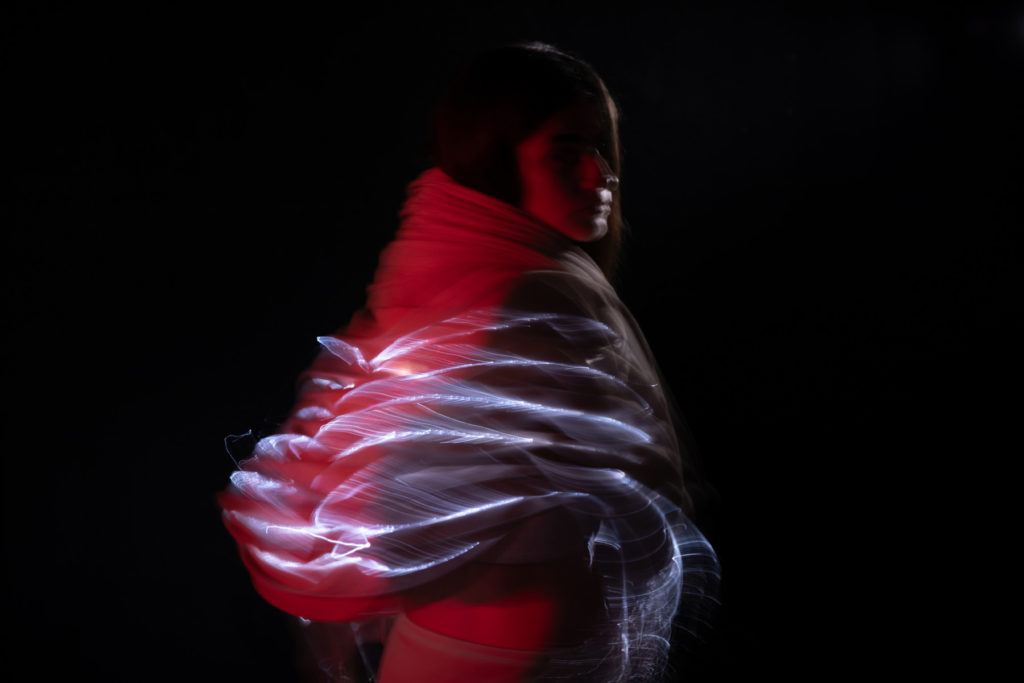
PUFF-AIR
We are exploring functional fashion to ensure survival in the climate crisis era. Our jacket is inspired by organisms that harvest water in dry environments and fog collection structures that are similarly designed. Combining this water collection technology with megamorph UV light-emitting screens and a water quality sensor, we present a garment that allows one to harvest, purity, test and drink water directly from the air.
The water-collecting knit is created by a Kniterate machine with a shareable file so others may customize their belongings with this functional textile. A fan circulates the surrounding air into the jacket compartment with the knit, which condenses the humidity into droplets that fall into a water pouch. The components of the jacket are sterilized by the megamorph UV light and monitored by the water quality sensor, allowing the wearer to hydrate directly.
By: Nico Garcia, Anna Cain, Julia Rodriguez
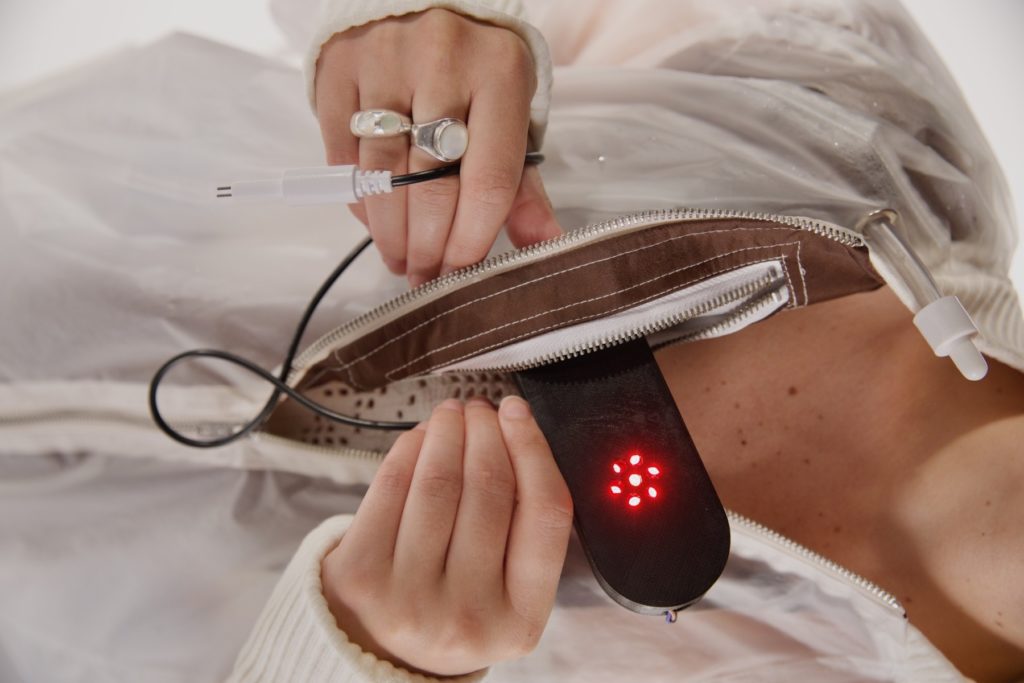
CLIMATIQUE
The future shines too bright and we may need a way to prevent ourselves from getting sunburnt. In 2050 the average temperature is estimated to be between 2 and 5°C higher than the average of today. This could seem like a small number, but echosystems are built on subtle equilibria and small shifts can mean big changings in everyday life.
How are human going to contrast these changes, while mantaining good living conditions and keeping the body at a temperature that does not subdue it to increasing stress? That is the question that brought us to the conceptualization of a garment that could enhance the process of skin temperature homeostasis, while also giving extreme comfort to the wearer, so that clothes could be thought as useful devices against climate change rather than mere embellishments.
We are thinking of using engineered fibers and materials that react to variations in outside temperature and humidity, changing their shape on a microscopic and macroscopic level to allow transpiration. The movement of the materials constituting the garment is going to make it suitable for many weather conditions and different seasons, implying the possibility of having less garments in our closet and the need of less energy to heat up or refresh closed spaces.. Moreover, by making it knitted, it is going to be suitable and comfortable for many different body types, hopefully taking us towards a reduction in the massive production of garments.
Finally, MEGAMORPH technology is going to be key in temperature perception: by embedding it into the garment, it could make the colour of our garment change with the input of temperature itself, going from darker to lighter colours.
Following this brief description, we leave a short video to show you our work. We still need to use some imagination to project what we intended as a prototype in a future where we hope this could be tangible reality: see the video here.
By: Candelaria Etcheverry, Elena Maria Cerciello, Virginia Ceruti
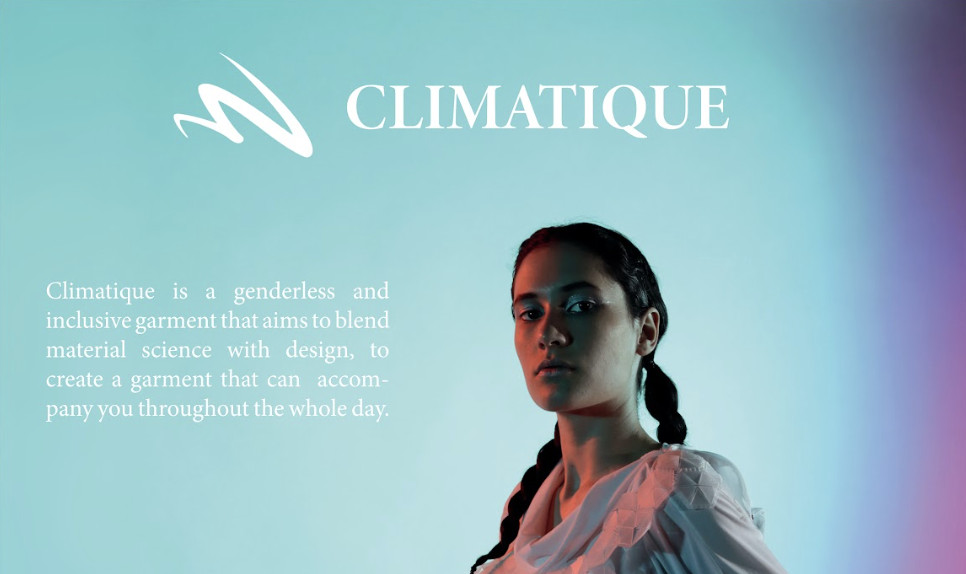
AIROSHELL
Air pollution could kill up to 40 people a day by 2030. Without intervention, the annual death toll from outdoor air pollution could double to 6.6 million globally by 2050. Creating a tangible solution means working towards the future by starting from the present. AIROSHELL is an open source concept that transforms our everyday clothing into walking air purifiers with the application of Titanium Dioxide (TiO2) to industrial or at-home knitting. The modular design can be attached to other capes in a seamless pattern through velcro ends to create shelter in extreme air conditions, thus facilitating community and increasing the efficacy of the Titanium Dioxide.
Furthermore, AIROSHELL integrates Megamorph to communicate measured levels of CO2 and VOCs in the surrounding area through light patterns and color gradients. As an open source file, the applications and production of AIROSHELL is entirely at the discretion of the user, thus rendering them boundless. With this innovative technology at our fingertips, we hold the power to shape a future where our clothing not only adorns us but exponentially multiplies its impact with each user and usage.
By: Florian Esser, Mirjam Mahle, Vivyan Z Zhang
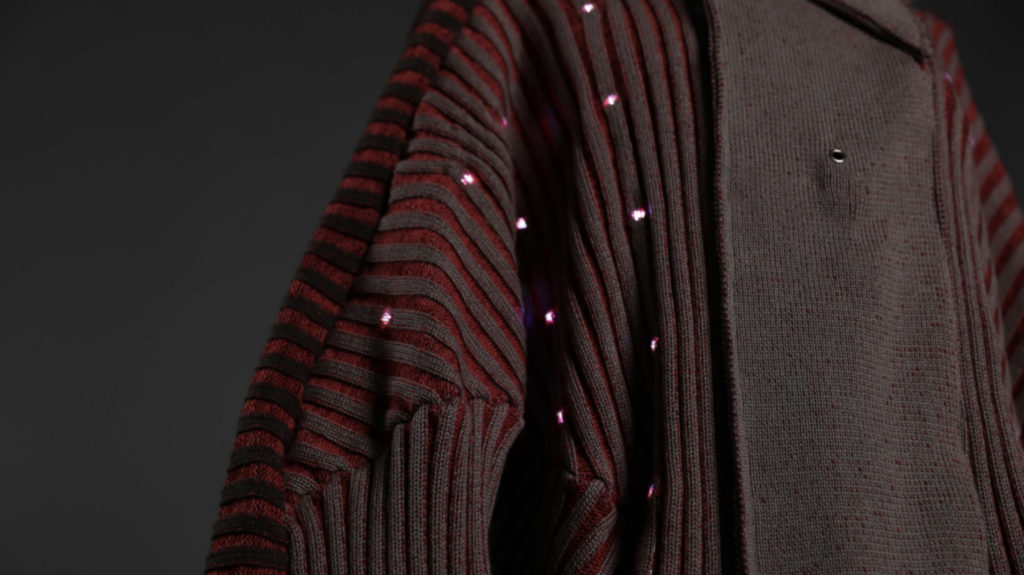
Read more about the Future Technologies for Sustainable Fashion educational program!